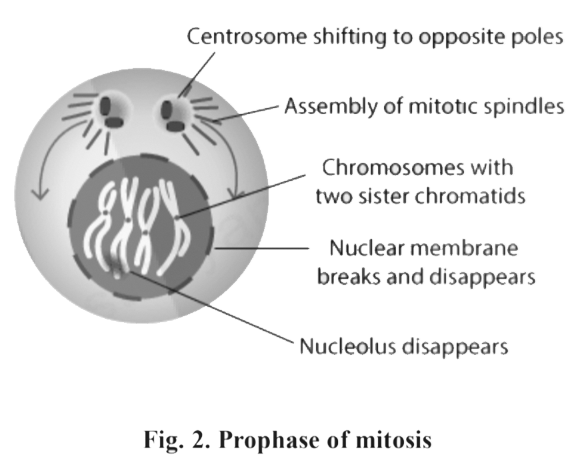Biology Notes for Chapter 10 Cell Cycle and Cell Division Class 11 - FREE PDF Download
FAQs on Cell Cycle and Cell Division Class 11 Biology Chapter 10 CBSE Notes - 2025-26
1. What are the main phases of the cell cycle according to Class 11 Biology revision notes?
The main phases of the cell cycle are interphase and mitotic phase. Interphase includes the G1 phase (cell growth and preparation), S phase (DNA replication), and G2 phase (final preparation for division). The mitotic phase involves both mitosis and cytokinesis, resulting in two daughter cells.
2. How does mitosis differ from meiosis in terms of process and outcome?
Mitosis is a single division producing two genetically identical diploid daughter cells from a somatic cell, maintaining chromosome number. Meiosis involves two consecutive divisions resulting in four genetically unique haploid cells (gametes), each with half the parent chromosome number, contributing to genetic variation.
3. Why is the interphase considered the most critical period for cell preparation during the cell cycle?
The interphase is crucial because the cell grows, performs regular functions, synthesizes proteins, replicates its DNA, and prepares necessary organelles. Most of the cell’s time is spent here, ensuring successful and error-free division.
4. Summarize the key steps of mitosis as described in Class 11 Biology Chapter 10 notes.
Mitosis includes:
- Prophase: Chromatin condenses; nucleus and nucleolus disappear; spindle fibres form.
- Metaphase: Chromosomes align at the cell’s equatorial plate.
- Anaphase: Sister chromatids separate and move toward opposite poles.
- Telophase: New nuclear membranes form, followed by cytokinesis resulting in two identical daughter cells.
5. What roles do cell division and the cell cycle play in growth and repair in organisms?
Cell division enables an organism to grow by producing new cells and replaces damaged or dead cells to maintain tissue health. The cell cycle controls the timing and sequence of these processes, ensuring genetic material is accurately passed to daughter cells.
6. How does the cell ensure genetic consistency during cell division?
The cell ensures genetic consistency by precisely replicating DNA during the S phase of interphase and by equally distributing chromosomes to daughter cells during mitosis. This maintains the correct chromosome number in each new cell.
7. Why is meiosis important in sexually reproducing organisms, as per revision notes?
Meiosis is essential for producing gametes (sperm and egg cells) that contain half the parent cell's chromosomes. This reductional division restores the species' chromosome number during fertilisation and increases genetic variation in the population.
8. What is the significance of the G0 phase in the cell cycle?
The G0 phase is a resting state where cells exit the active cell cycle, ceasing division. Cells like neurons remain in G0 permanently, allowing for specialization and preventing unnecessary cell proliferation.
9. How does crossing over during meiosis contribute to genetic diversity?
During Prophase I of meiosis, homologous chromosomes exchange segments in a process termed crossing over. This recombination shuffles genes, producing new allele combinations and contributing to genetic diversity in offspring.
10. What revision strategies are recommended for CBSE Class 11 Biology Chapter 10?
Effective revision strategies include:
- Understanding key terms such as interphase, mitosis, meiosis, and cytokinesis
- Drawing labelled diagrams of cell division stages
- Summarizing main concepts and creating concept maps
- Regular self-testing with previous questions for strong recall
11. How do errors in the cell cycle or cell division affect an organism?
Errors such as uncontrolled division or faulty chromosome separation can lead to conditions like cancer or genetic disorders. Proper regulation of the cell cycle ensures healthy growth and functioning.
12. What are the key differences in chromosome movement during mitosis and meiosis I?
In mitosis, sister chromatids separate and move to opposite poles. In meiosis I, homologous chromosomes separate while sister chromatids remain attached, reducing chromosome number by half in each cell.



































